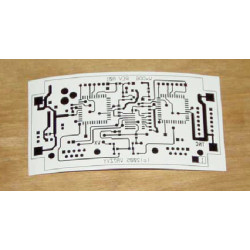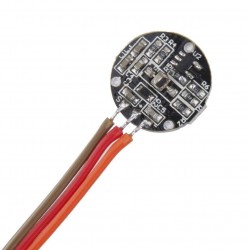ECG (Electrocardiogram) and heart fingerprint are both related to the human heart and its unique characteristics. Here's an explanation of each term:
1. ECG (Electrocardiogram): An electrocardiogram, commonly referred to as ECG or EKG, is a medical test that records the electrical activity of the heart. It is a non-invasive procedure performed using electrodes attached to the skin on various parts of the body. The electrodes detect the electrical signals generated by the heart as it beats and transmit them to a machine, which displays the electrical activity as a graph. ECGs are used to diagnose and monitor various heart conditions, such as arrhythmias, heart attacks, and abnormalities in heart structure or function.
2. Heart Fingerprint: The concept of a heart fingerprint refers to the unique characteristics of an individual's heart rhythm or pattern. Just like every person has a unique fingerprint, the electrical activity of the heart can also exhibit distinctive patterns specific to an individual. These patterns can be analyzed and used as a biometric identifier, similar to fingerprints or other biometric markers. Heart fingerprint technology aims to develop methods to identify individuals based on their unique heart rhythms, potentially for applications such as secure authentication or identification systems.
It's important to note that while ECGs capture and display the electrical activity of the heart, the term "heart fingerprint" is more of a metaphorical concept referring to the uniqueness of an individual's heart rhythm rather than a recognized scientific term.
Both ECG and heart fingerprint analysis have important applications in the field of medicine, biometrics, and research. ECG is widely used in clinical settings to diagnose heart conditions, while heart fingerprint technology is still in its early stages of development and exploration.
-
Your shopping cart is empty!
-
Mixed Menu
New
Top Sellers
Heat transfer law making circuit boards, circuit board is drawn graphics, laser printers print in thermal transfer paper, and then covered in Bo..₹12.0When drilling holes in a printed circuit board (PCB) for electronic components, specific drill bits called PCB drill bits or PCB drills are used. Thes..₹10.2When drilling holes in a printed circuit board (PCB) for electronic components, specific drill bits called PCB drill bits or PCB drills are used. Thes..₹10.2A 240V round 2-pin female electrical plug connector for an extended power cord typically refers to a specific type of plug used for connecting applian..₹15.0 - Blog
Biometric ECG
ECG (Electrocardiogram) and heart fingerprint are both related to the human heart and its unique characteristics. Here's an explanation of each term:
1. ECG (Electrocardiogram): An electrocardiogram, commonly referred to as ECG or EKG, is a medical test that records the electrical activity of the heart. It is a non-invasive procedure performed using electrodes attached to the skin on various parts of the body. The electrodes detect the electrical signals generated by the heart as it beats and transmit them to a machine, which displays the electrical activity as a graph. ECGs are used to diagnose and monitor various heart conditions, such as arrhythmias, heart attacks, and abnormalities in heart structure or function.
2. Heart Fingerprint: The concept of a heart fingerprint refers to the unique characteristics of an individual's heart rhythm or pattern. Just like every person has a unique fingerprint, the electrical activity of the heart can also exhibit distinctive patterns specific to an individual. These patterns can be analyzed and used as a biometric identifier, similar to fingerprints or other biometric markers. Heart fingerprint technology aims to develop methods to identify individuals based on their unique heart rhythms, potentially for applications such as secure authentication or identification systems.
It's important to note that while ECGs capture and display the electrical activity of the heart, the term "heart fingerprint" is more of a metaphorical concept referring to the uniqueness of an individual's heart rhythm rather than a recognized scientific term.
Both ECG and heart fingerprint analysis have important applications in the field of medicine, biometrics, and research. ECG is widely used in clinical settings to diagnose heart conditions, while heart fingerprint technology is still in its early stages of development and exploration.































-2-250x250.jpg)
-3-250x250.jpg)
-3-250x250.jpg)
-5-250x250.jpg)









